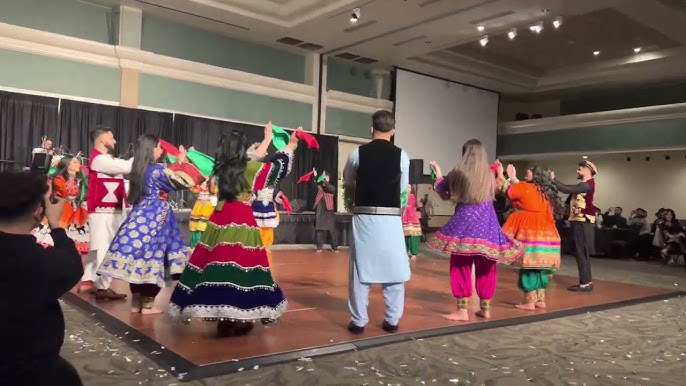Afghan National Dance
CULTURE
Attan is the iconic tribal dance originating from the Pashton regions of southeastern Afghanistan .It's widely considered the national dance of Afghanistan and a vital element of Pashtun cultural identity.
Attan is typically performed to the beat of a dhol (drum) or other instruments such as the tabla, the 18-stringed Robab, the surnai flute (also known as the shehnai) or a wooden flute known as a Toola. This ceremonial dance holds significance in various cultural events such as weddings, festivals, and historically, even during periods of conflict and war. Rich in cultural symbolism, Attan is often performed with handkerchiefs and swords, serving as a reminder of the performers’ glorious and victorious past.
More From source:
Traditionally, Afghans have been a very musical people who enjoy singing and playing many types of instruments. Some of the instruments include:
The harmonium, which is similar to a small piano or accordion;
The chang, a harp-like apparatus;
The tabla, a percussion instrument like bongos;
The dhol, a double-headed barrel drum;
The surnai and wooden flutes; and
Several stringed instruments such as the robab, settar (or sitar), dil rubah, and tanbur.
Typically, Afghan music takes the form of folk songs or ballads. Many songs are known by everyone and have been around for generations. Afghans also enjoy performing the Pashtun folk dance, attan, which is the national dance of Afghanistan. The technique behind the attan has changed over the centuries, but its base has not changed. It is usually performed in a circle to the beating of a Dhol drum, which has a very deep and low-resonant sound. The circle can range from two to over a hundred people, with men and women dancing separately or together, according to local norms or family restrictions. The performers follow each other going around and around in a circle as the rhythm and beat speed up.There are many different kinds of attan in Afghanistan, reflecting regional differences, such as Kabuli, Wardaki, Logari, Khosti/Paktia, Herati, Kochyano/Kuchi, Khattak, and Nuristani, which have variations of twists and turns, clapping, steps, spins, head movements, handkerchief waving, and use of swords or weapons by men.
Source: ANALYSIS OF AN INTERVENTION


